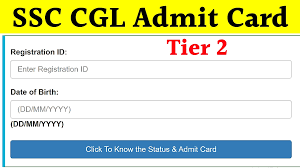Smart Investing: How to Grow Your Portfolio in Any Market”
Smart Investing: How to Grow Your Portfolio in Any Market
- Diversify Your Assets: Spread your investments across different asset classes (stocks, bonds, real estate, etc.) to reduce risk and enhance returns.
- Focus on Long-Term Growth: Be patient and focus on long-term goals rather than trying to time the market for short-term gains.
- Understand Risk Tolerance: Know how much risk you’re willing to take and build a portfolio that aligns with your comfort level and financial objectives.
- Stay Informed: Keep up with market trends, economic news, and industry shifts to make informed investment decisions.
- Rebalance Regularly: Review and adjust your portfolio periodically to maintain a proper mix of investments as your goals and market conditions change.
- Invest in Low-Cost Index Funds: Low-cost index funds provide exposure to a broad range of assets, often outperforming actively managed funds over time.
- Take Advantage of Dollar-Cost Averaging: Invest a fixed amount at regular intervals to reduce the impact of market volatility and avoid trying to time market highs and lows.
- Consider Dividend Stocks: Dividend-paying stocks offer the potential for regular income and can help stabilize your portfolio in volatile markets.
- Utilize Tax-Advantaged Accounts: Maximize contributions to retirement accounts (like IRAs and 401(k)s) to reduce taxable income and grow your wealth tax-deferred.
- Stay Disciplined and Avoid Emotional Decisions: Resist reacting to market fluctuations emotionally. Stick to your plan and focus on your long-term investment goals.
Diversify Your Assets: A Key Strategy for Reducing Risk and Enhancing Returns
Investing in a single asset class, such as stocks or bonds, may be tempting because of its perceived simplicity or familiarity. However, this approach is inherently risky. The value of a single asset class can fluctuate wildly based on economic conditions, market cycles, and global events. By diversifying your assets—spreading your investments across different asset classes—you significantly reduce risk while enhancing the potential for returns. In this article, we’ll explore the importance of diversification, the different asset classes to consider, and how a diversified portfolio can help you achieve long-term financial success.
Understanding Diversification
At its core, diversification is the practice of allocating your investments across various types of assets, such as stocks, bonds, real estate, commodities, and even alternative investments. The primary goal of diversification is to reduce the overall risk in your portfolio by not putting all your eggs in one basket.
When you diversify, the performance of one investment is less likely to dramatically affect the overall performance of your portfolio. For instance, if the stock market experiences a downturn, your bond or real estate investments might still perform well, or at least provide some stability. Conversely, if the real estate market falters, other asset classes in your portfolio may offset the losses.
The Benefits of Diversification
1. Risk Reduction
One of the most significant advantages of diversification is its ability to reduce risk. Every asset class behaves differently in various market conditions. For example, stocks may perform well when the economy is strong, while bonds may outperform when the economy is slowing down. Similarly, real estate can offer steady cash flow even during stock market volatility. By holding a mix of assets, you can shield your portfolio from the dramatic swings of any single investment. This reduces the overall risk of your portfolio, making it more resilient in the face of economic uncertainty.
2. Smoothing Out Volatility
Markets are unpredictable, and investments often experience periods of high volatility. Diversifying your portfolio can help smooth out these fluctuations. If one asset class is experiencing a downturn, the other assets in your portfolio may remain stable or even rise in value, thereby reducing the overall volatility of your investment strategy. This lessens the emotional stress of watching the market’s daily fluctuations, as it minimizes the impact on your overall wealth.
3. Capitalizing on Market Cycles
Different asset classes perform better in different market cycles. For example, stocks might thrive during a period of economic growth, while bonds are generally more attractive during times of economic uncertainty. Real estate might perform better when interest rates are low, as borrowing is cheaper. By diversifying your assets, you ensure that you are positioned to take advantage of different market cycles. This flexibility allows you to capitalize on the unique opportunities that arise across various sectors of the economy.
4. Enhancing Long-Term Returns
While diversification reduces risk, it also enhances the potential for returns over the long term. By investing across a broad range of assets, you are more likely to capture the growth of different sectors of the economy. For instance, while stock markets might deliver high returns in the long run, real estate can provide consistent cash flow through rental income, and bonds can deliver stable returns through interest payments. When combined, these assets work together to create a more balanced and robust investment strategy, which ultimately enhances the potential for higher long-term returns.
Key Asset Classes to Diversify Your Portfolio
Now that we understand the importance of diversification, let’s explore some of the key asset classes you should consider when building a diversified portfolio:
1. Stocks
Stocks represent ownership in a company and offer the potential for high returns. Over time, the stock market has proven to be one of the most effective wealth-building tools, although it comes with significant short-term volatility. Stocks are generally classified into different categories, including:
- Large-Cap Stocks: These are well-established companies with a large market capitalization. They tend to be more stable and less risky than smaller companies.
- Mid-Cap Stocks: These companies are in a growth phase and offer the potential for higher returns, but they come with more risk than large-cap stocks.
- Small-Cap Stocks: These companies have the highest growth potential, but they also come with higher risk and volatility.
- International Stocks: Investing in stocks from other countries allows you to tap into global growth, though these investments may also involve additional risks related to foreign economies and currency fluctuations.
2. Bonds
Bonds are essentially loans made to corporations or governments in exchange for regular interest payments and the return of principal at maturity. They are considered lower-risk investments compared to stocks. There are various types of bonds:
- Government Bonds: Issued by national governments, these bonds are considered safe investments, particularly U.S. Treasury bonds. They provide steady interest payments and are generally low-risk.
- Corporate Bonds: Issued by companies, corporate bonds offer higher interest rates, but they come with additional risk based on the financial health of the issuing company.
- Municipal Bonds: Issued by local or state governments, these bonds are often tax-exempt and can be attractive for investors in higher tax brackets.
Bonds are typically less volatile than stocks and can provide a stable income stream. As such, they act as a stabilizing force within a diversified portfolio.
3. Real Estate
Real estate investments can provide both income (through rent) and long-term capital appreciation. Real estate is considered a tangible asset and often acts as a hedge against inflation. There are multiple ways to invest in real estate:
- Direct Investment: Buying physical properties, such as rental homes, commercial buildings, or land.
- Real Estate Investment Trusts (REITs): These are publicly traded companies that own, operate, or finance real estate properties. REITs allow you to invest in real estate without the need to manage properties yourself.
Real estate tends to perform well during periods of low interest rates and can add stability to your portfolio during stock market downturns.
4. Commodities
Commodities include physical assets such as gold, silver, oil, and agricultural products. These assets are often used as a hedge against inflation and economic uncertainty. Commodities can also perform well during periods of rising prices. Gold, for example, has been historically viewed as a safe-haven asset during market volatility and inflationary periods.
Commodities can be purchased directly or through commodity-focused exchange-traded funds (ETFs), making them an accessible asset class for diversification.
5. Alternative Investments
Alternative investments are non-traditional assets that can offer attractive returns and reduced correlation with traditional markets like stocks and bonds. Some examples include:
- Private Equity: Investing in private companies not listed on stock exchanges.
- Hedge Funds: Pooled investment funds that use various strategies to generate returns for their investors.
- Cryptocurrencies: Digital currencies like Bitcoin and Ethereum are becoming increasingly popular as alternative investments, though they come with high volatility.
Alternative investments can add an additional layer of diversification to your portfolio, but they often come with higher risk and less liquidity.
Creating a Diversified Portfolio
To build a diversified portfolio, consider the following steps:
- Assess Your Risk Tolerance: Understand how much risk you’re willing to take based on your age, financial goals, and time horizon.
- Allocate Across Asset Classes: Based on your risk tolerance, determine the appropriate mix of stocks, bonds, real estate, commodities, and alternative investments. Younger investors may opt for a higher allocation in stocks for growth, while older investors may lean more toward bonds for stability.
- Rebalance Regularly: Over time, the performance of various asset classes will change, causing your portfolio’s allocation to drift from its target. Rebalance your portfolio periodically to maintain the right asset allocation.
- Stay Informed: Keep up with market trends and changes in economic conditions. Adjust your asset allocation if necessary to reflect changing circumstances.
Conclusion
Diversification is a cornerstone of smart investing. By spreading your investments across various asset classes, you can reduce risk, enhance returns, and achieve a more balanced portfolio. The key is to understand the different asset classes available and how they complement each other. Whether you’re a seasoned investor or just starting, diversification allows you to take advantage of market cycles, manage volatility, and build wealth over time. Remember, the goal is not just to grow your money but to protect it and ensure it continues working for you in any market environment.
Share this content:










Post Comment